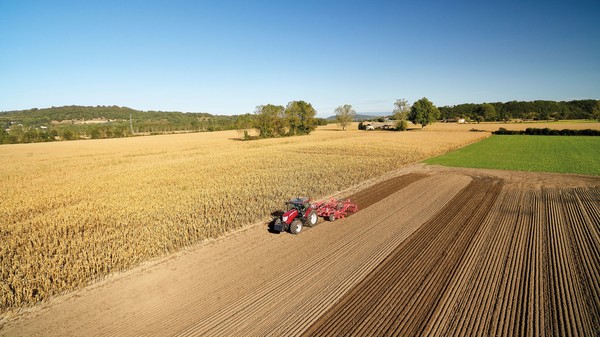
Innovation, a challenge for farms
The Confederazione Nazionale dei Coltivatori Diretti carried out a survey among a significant sample of farms and stakeholders to analyse the sector's propensity for innovation. Positive elements emerged, although there is still a lack of knowledge of the available tools
The Italian agricultural sector is favourable to the introduction of innovative elements in its production activity, but still little informed about the real potential of various innovations, such as precision agriculture (PA). This is the main finding of a survey carried out by Coldiretti last December on the need for innovation in the Italian primary sector, in order to obtain an overall picture of the situation and prospects, taking into account several points of view. It involved 5,400 people working in the sector, mainly farmers, but also representatives of agricultural institutions and researchers from universities specialising in agriculture.
The sample of farms includes all activities - from agro-forestry to zootechnics, including agritourism and processing - mostly conducted at a professional level, but also at a hobby level. These are the farm profiles: one farm out of five is managed by a young person, and a quarter of the total by female entrepreneurs, the farms are mostly up to 5 hectares in size, but farms over 10 hectares are also considered in a homogeneous way. On the educational front, the sample is made up of 13% university graduates, 49% high school graduates and 4.5% with only an elementary school diploma. In terms of geography, all Italian regions are represented, with a majority - participation in the survey was voluntary - from Piedmont (18.5%), Veneto (14.3%), Emilia Romagna (13.8%), Lombardy (13%), Tuscany (6.5%) and Puglia (4.5%).
In detail, 80% of those interviewed were in favour of innovation (only 4.5% were clearly against it), but only 35% were familiar with precision farming techniques, while the remainder had little knowledge of the subject, with 22% having never heard of it. 22% of the farms surveyed believe that precision farming techniques are not very easy or not at all easy to adopt, and for 60% in particular they are difficult to introduce in small farms; 37% believe that agricultural consortia can play an important role in training on the subject. Among the farms applying precision farming, 70% rated the use of these techniques as fairly or very positive from an economic point of view (none expressed a negative opinion), and one in three took part in training courses on the subject.
As far as the future is concerned, while one company in five intends to invest in precision farming in the next five years, 50% of the sample is uncertain or does not express an opinion on the subject, representing an important catchment area for training and consultancy activities in order to provide the right tools for informed choices. In fact, 78% of the sample believes that advice on innovation can be very or fairly useful.
The survey was carried out as part of CAP activities to raise awareness of the importance of innovation and advice in agriculture, particularly in relation to the introduction of the so-called AKIS model (known to only 8% of respondents). The Agricultural Knowledge and Innovation System is an integrated system that includes mainly farms, but also consultants, researchers, communication companies and representatives of the sector, aimed at contributing to the creation of a smart, sustainable and competitive agriculture. Another figure considered in the questionnaire is that of the Innovation Advisor, known to 5% of those interviewed, included in the European programmes to promote the transfer of knowledge and innovation in the agricultural farm system and which Coldiretti is promoting.
Speaking of innovation, in closing the questionnaire also reviewed the issue of social networks, which only one in five companies use to promote their activities, with a preference for Facebook (43%), followed by Instagram (28%) and WhatsApp (22%).








